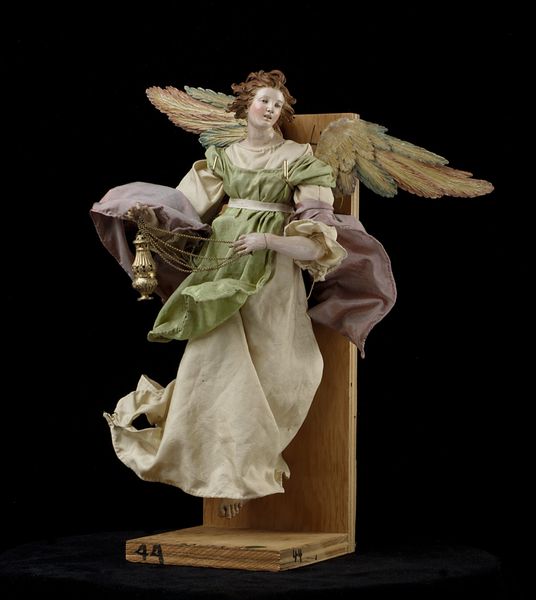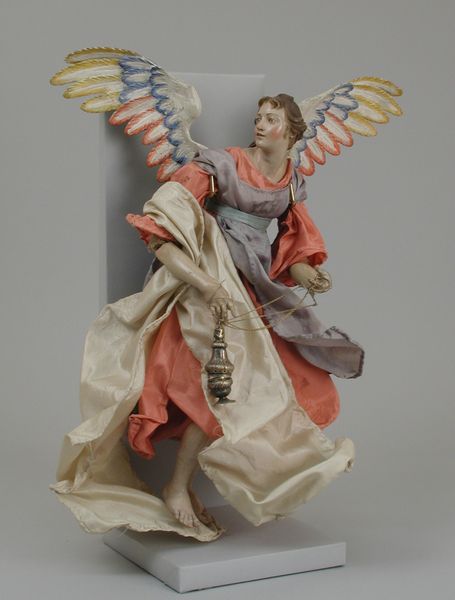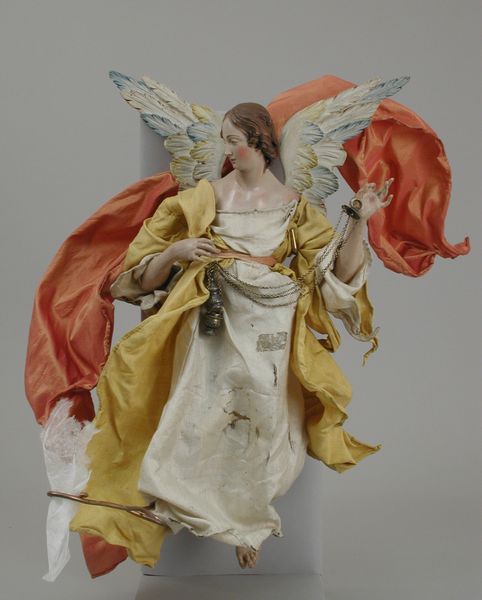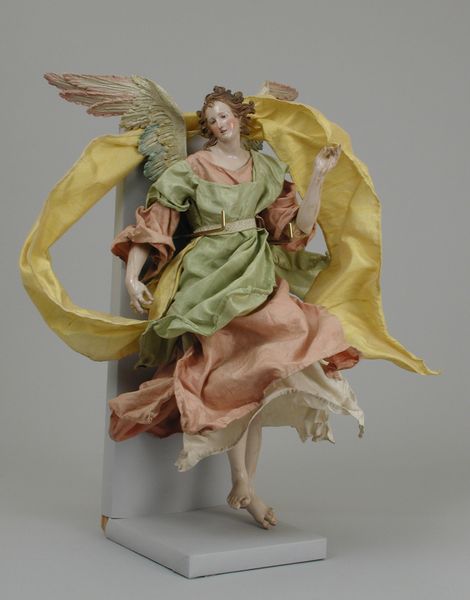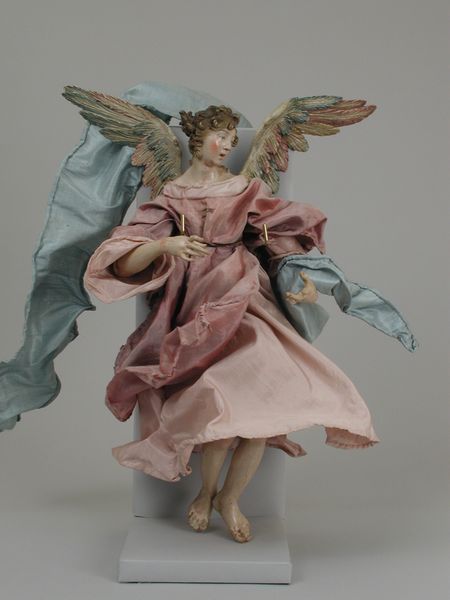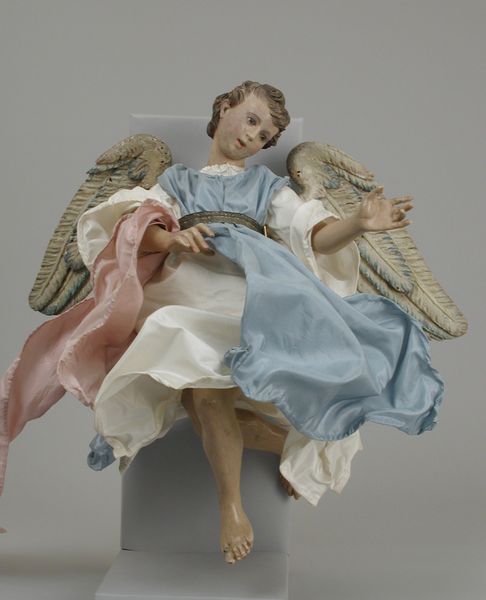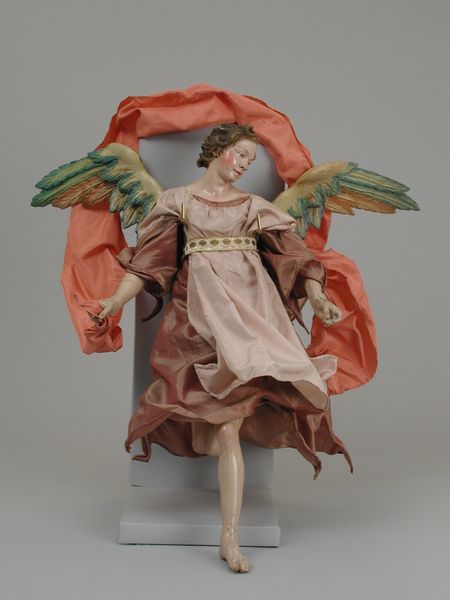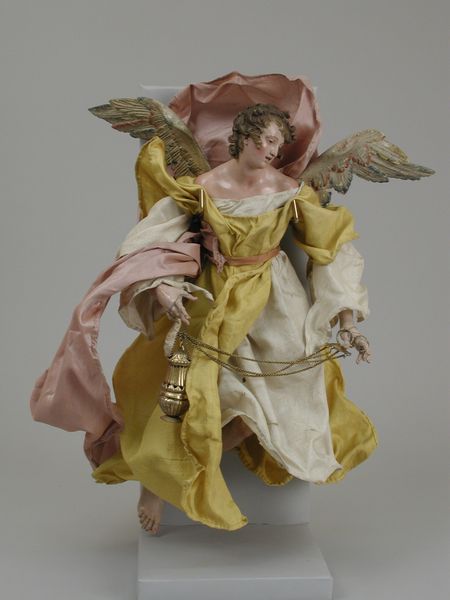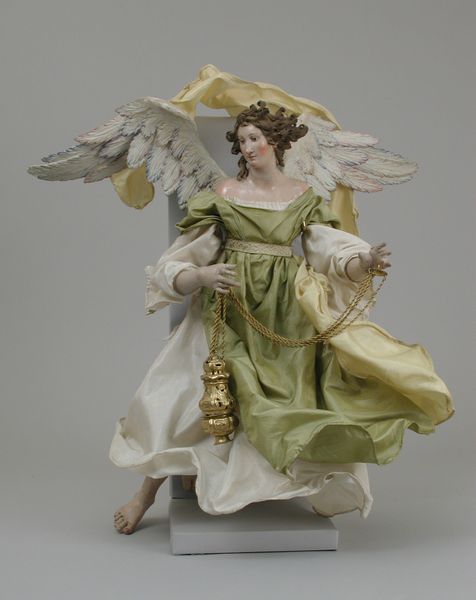
Dimensions: H. 15 1/4 in. (38.7 cm.)
Copyright: Public Domain
Giuseppe Gori created this terracotta sculpture, titled “Angel”, sometime between 1770 and 1810. Gori’s angel embodies the cultural milieu of late eighteenth-century Italy. The sculpture invites us to reflect on the gendered representation of angels in art history. Typically portrayed with delicate features and soft expressions, they reflect idealized notions of femininity and purity. Gori's angel is no exception; the gentle visage and graceful pose contribute to a sense of ethereal beauty. Consider the socio-political context in which Gori was working. How might the prevailing attitudes towards religion and power have shaped the creation of this artwork? What role did religious imagery play in shaping the identities and values of the time? Through the lens of contemporary theory, we can unpack the complex layers of meaning embedded in the artwork. As you stand before this sculpture, what emotions does it evoke?
Comments
No comments
Be the first to comment and join the conversation on the ultimate creative platform.



